Recently, the rules of the narrative game that has driven the crypto industry are beginning to change. Market participants are developing a meta-awareness of the narrative game itself, and the recent meme coin craze is a direct satire of the existing culture.
The crypto industry can no longer justify not providing applications for general users. It has reached a point where there is a pressing need for applications that can generate demand for block space.
The greatest advantage of crypto lies in its ability to assign economic value to any idea and provide a platform for trading it. Recently, the crypto market has seen new forms of experiments utilizing the attention economy and speculative characteristics, such as memecoins, social trading, and prediction markets. This signals the potential for the advent of more diverse onchain applications and business models in the future.
For onchain applications, speculation is one of the most powerful functions. The increasing social demand for speculation can attract users known as "degens," who can become familiar with the onchain environment through this.
In the long term, the goal should be to provide value beyond speculation. It is necessary to convert users drawn by speculative demand into those who appreciate the core value of the service, build a sustainable token economy, and ultimately offer a social graph and product value that surpass speculation.

Crypto is like building a casino on Mars. From redefining money to reshaping interactions with application, the systems and mechanisms society has established are being reimagined to fit this new paradigm called crypto. It goes beyond a technological innovation, embodying diverse cultural and social meanings: For libertarians, crypto offers a path to free market and autonomy. For cypherpunks, it provides a censorship-resistant and permissionless network to exhcange value. For entrepreneurs, crypto serves as the foundation to build the next generation of the internet. For traders, it is a source of endless dopamine and potential profits. Depending on one’s perspective, the shape of the casino crypto has been building can vary greatly. What do you envision the future shaped by the crypto to look like?
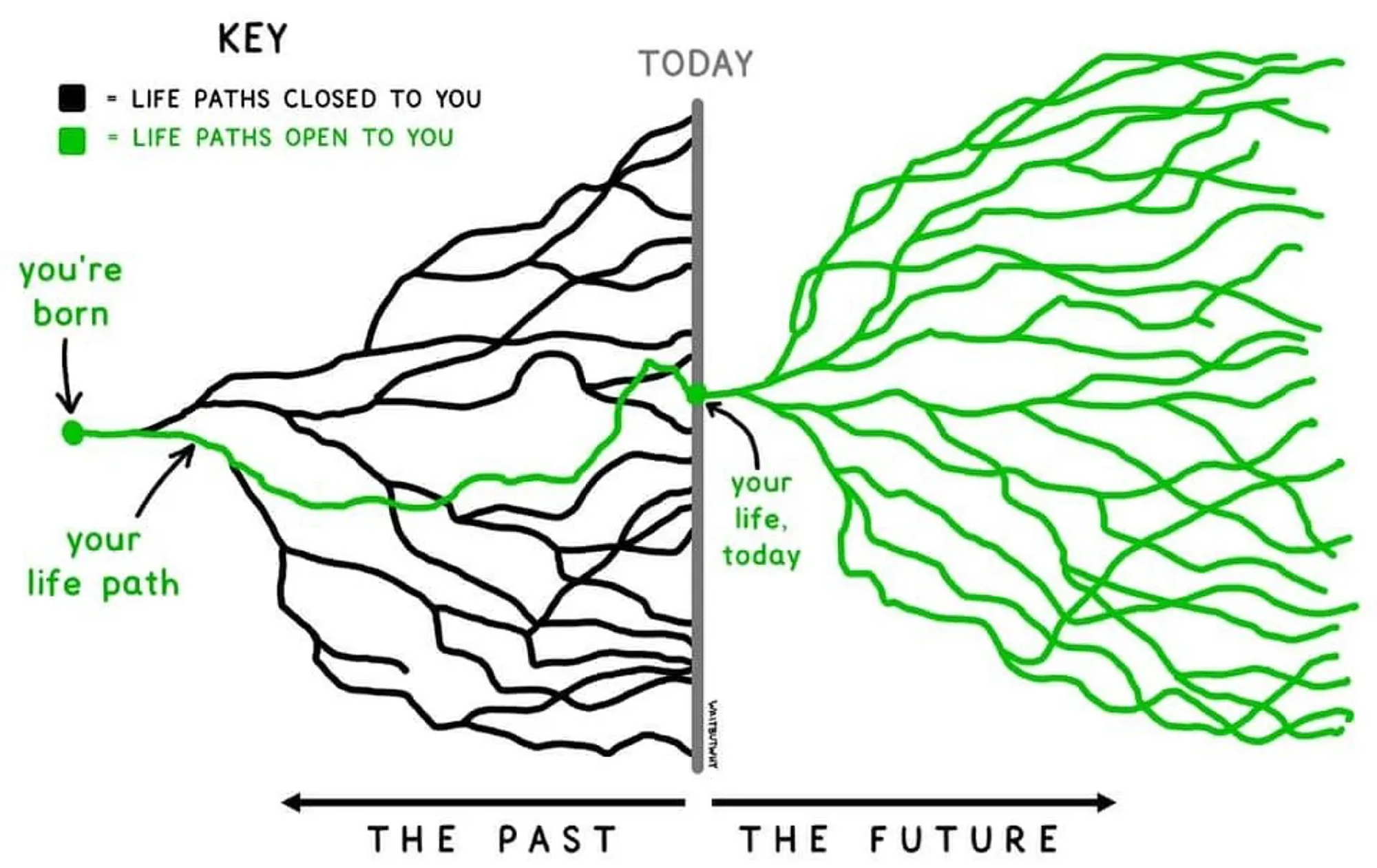
Source: Delievery at Dawn | a 4844 film
Now passing a midpoint of 2024, this year was certainly dynamic, showcasing the multifaceted nature of the crypto industry. Bitcoin gained institutional recognition with the approval of an ETF. Ethereum successfully implemented the Dencun upgrade, including EIP-4844. Rollups are deployed in numerous projects and become a dominant solution to launch a new chain. Solana announced its spectacular revival after enduring a period of hardship, and the bull market started from the last year has sparked a craze for memecoins and celebrity coins.
Regarding applications, we've seen significant developments in the crypto space. Major DeFi protocols have matured over time and is growing steadily. Simultaneously, new categories like SocialFi and narratives like restaking and AI have emerged, drawing attention and speculative actions.
The crypto market has experienced a notable resurgence compared to the previous downturn. However, this recovery has been accompanied by an unprecedented level of polarization within the industry. On one side, critics dismiss memecoins as pointless speculation, while proponents argue they represent innovative Go-To-Market strategies and exemplify emerging models of the attention economy. Similarly, the industry is split between those who celebrate the evolution of new narratives and infrastructure, and those who express fatigue over elitism in the space.
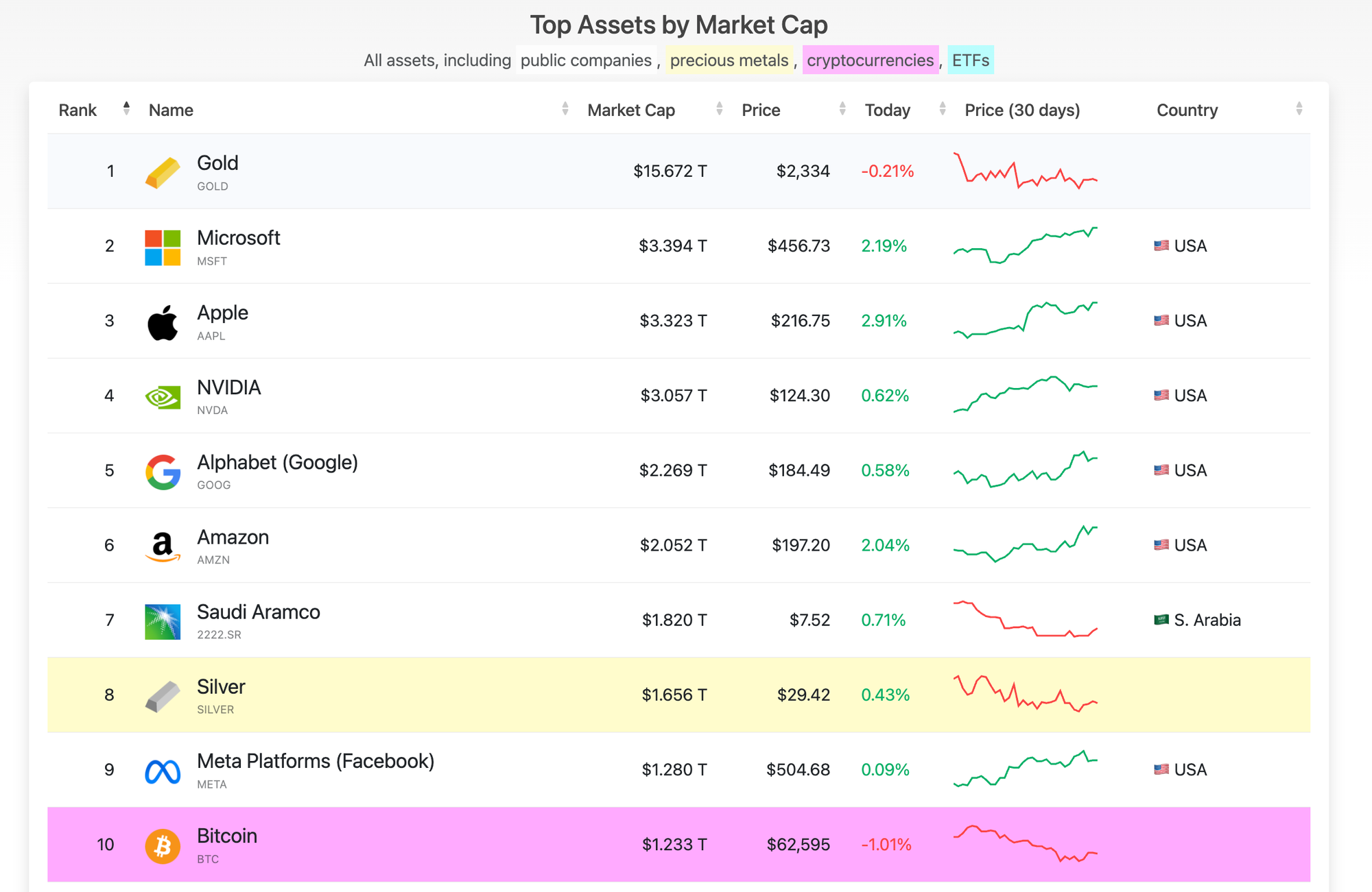
Source: Fractal Lives
Since Bitcoin's birth in 2008, the crypto industry has followed a more turbulent path than any other, reaching its current state through multiple cycles of growth and decline. Just when public interest seems to fade, the industry dramatically resurges, generating new narratives and hype. Similarly, the future development of the crypto industry encompasses countless scenarios and possibilities. This article reflects on the narrative game that has driven the crypto industry thus far, explores recent trends in the evolving landscape, and considers the direction in which the industry should progress.
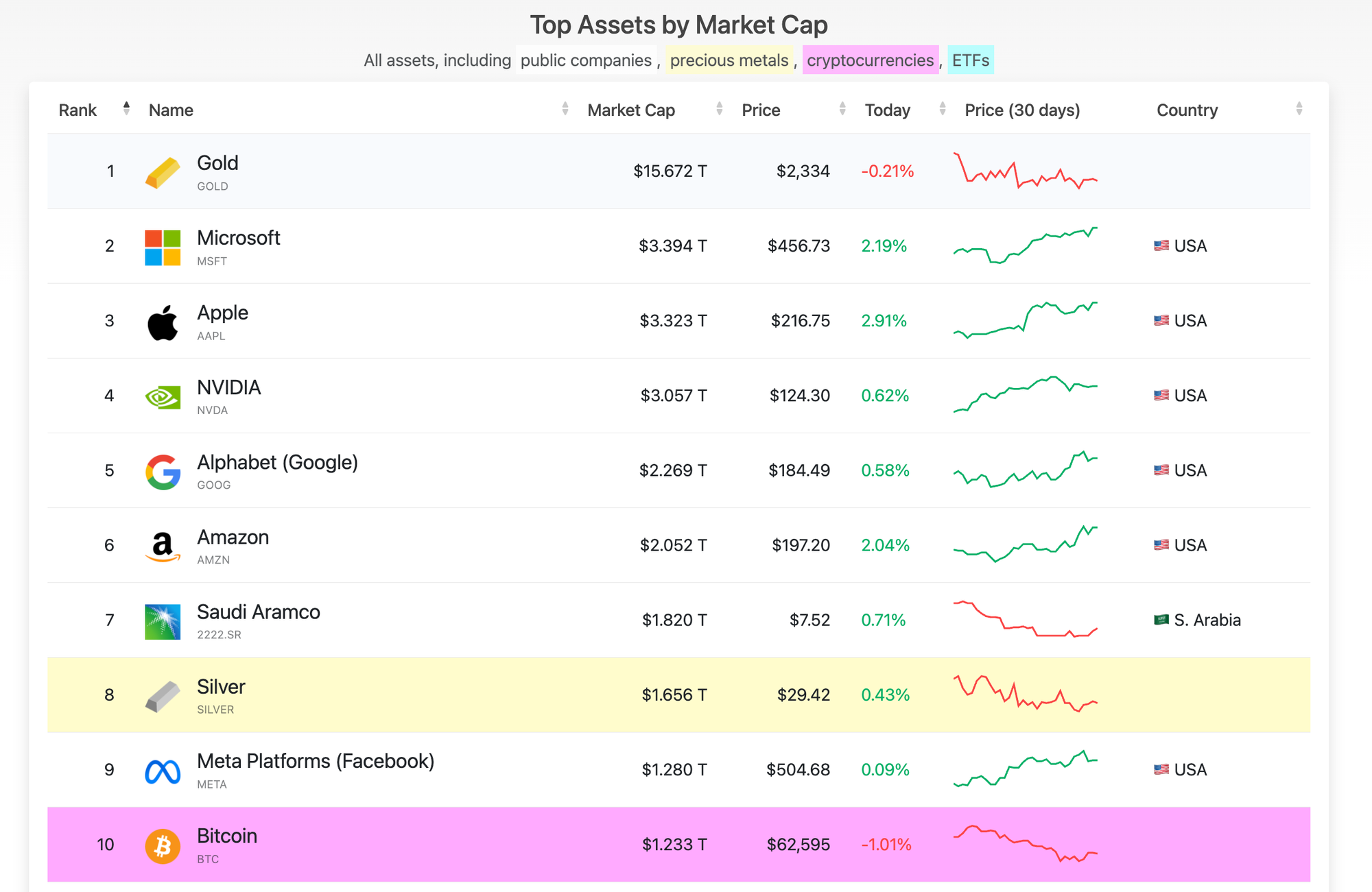
Everything started with Bitcoin. Since its inception, the crypto industry has undergone numerous developments and changes, yet Bitcoin still functions as an index for the entire sector. As of this writing, Bitcoin's market capitalization stands at $1.2 trillion, ranking 10th among all asset classes. Recently, Bitcoin has further solidified its status as 'digital gold' with the approval of ETF. However, the $1.2 trillion market cap of Bitcoin can be explained not by being a business based on operating profits, but by its perception as an asset with scarcity and legitimacy. Even Visa and Mastercard, the world's most widely used payment networks, fall short of half of Bitcoin's market capitalization.
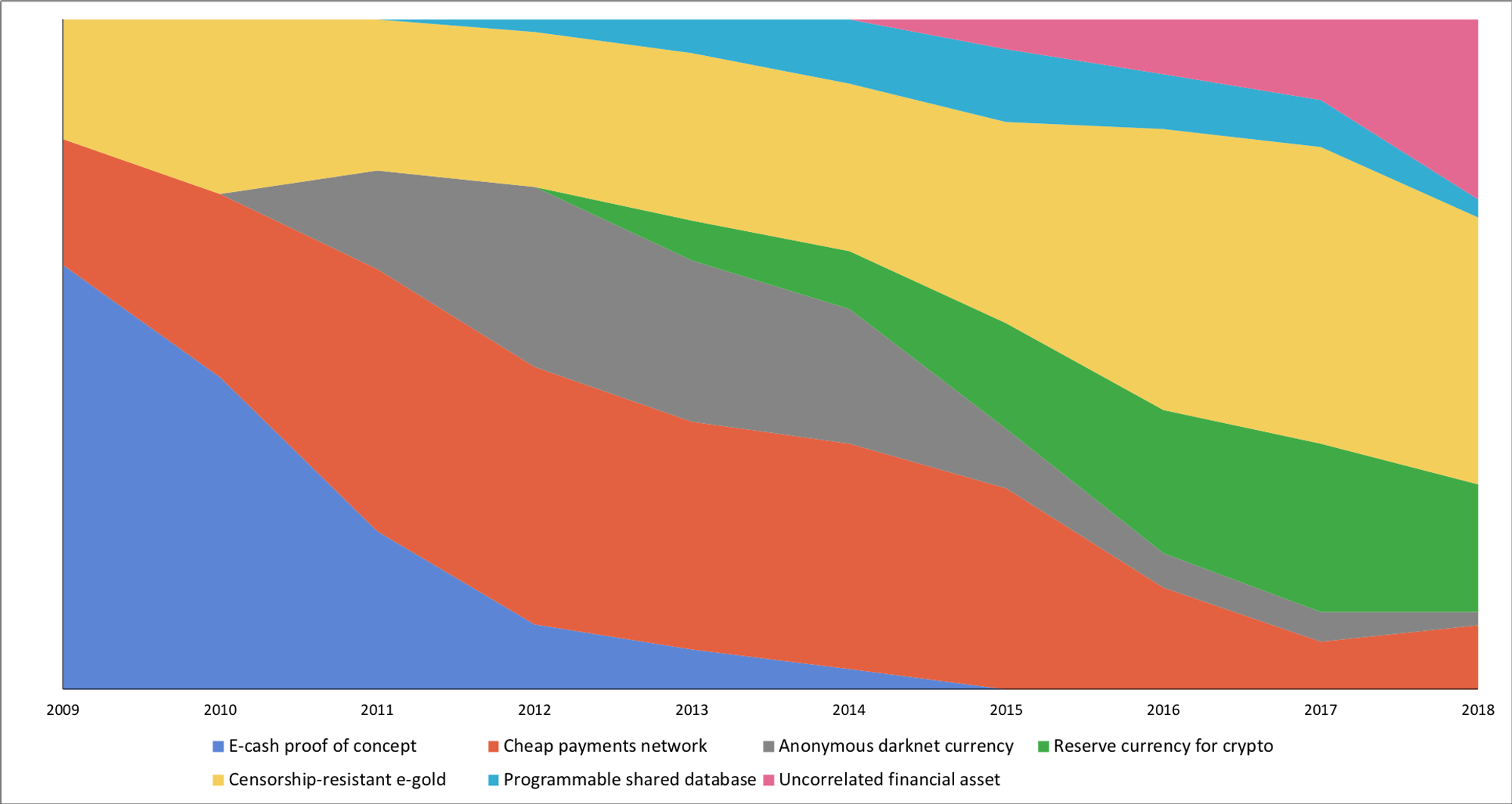
Source: Visions of Bitcoin
Bitcoin wasn't recognized as 'digital gold' from the start. The graph above shows how sentiment on Bitcoin has evolved over time. In its early days, most people viewed Bitcoin as a new form of electronic money or a cheap payment network. In the early 2010s, it was also widely perceived as a currency for the dark web. However, as time passed and Bitcoin gained its legitimacy, its narrative shifted from a medium of exchange to a store of value. The latter part of the graph, around 2018, clearly shows that public opinion had tilted much more towards Bitcoin as an asset class rather than a payment network. While data beyond 2018 isn't shown in this graph, Bitcoin's 'digital gold' narrative has not only remained valid but has grown even stronger up to the present day.
The insight Satoshi Nakamoto tapped into with Bitcoin was that the essence of money originate from social consensus. Blockchain is just a cryptographic implementation of social consensus among participants. The value of such a network depends on how its participants value the network. If Bitcoin had been perceived only as a payment network or dark web currency, rather than the narrative of a store of value, it must have been difficult for it to achieve its current value.
The significance and success of Bitcoin set the standard for protocols and tokens that emerged afterwards. Like Bitcoin, most tokens in the crypto simultaneously possess characteristics of both a business and an asset. Additionally, the censorship-resistant and permissionless nature of blockchain provided a foundation for anyone to issue tokens and allow others to trade them. To increase the value of their tokens, each protocol needs to get more people to sympathize with their vision and perceive the tokens as valuable
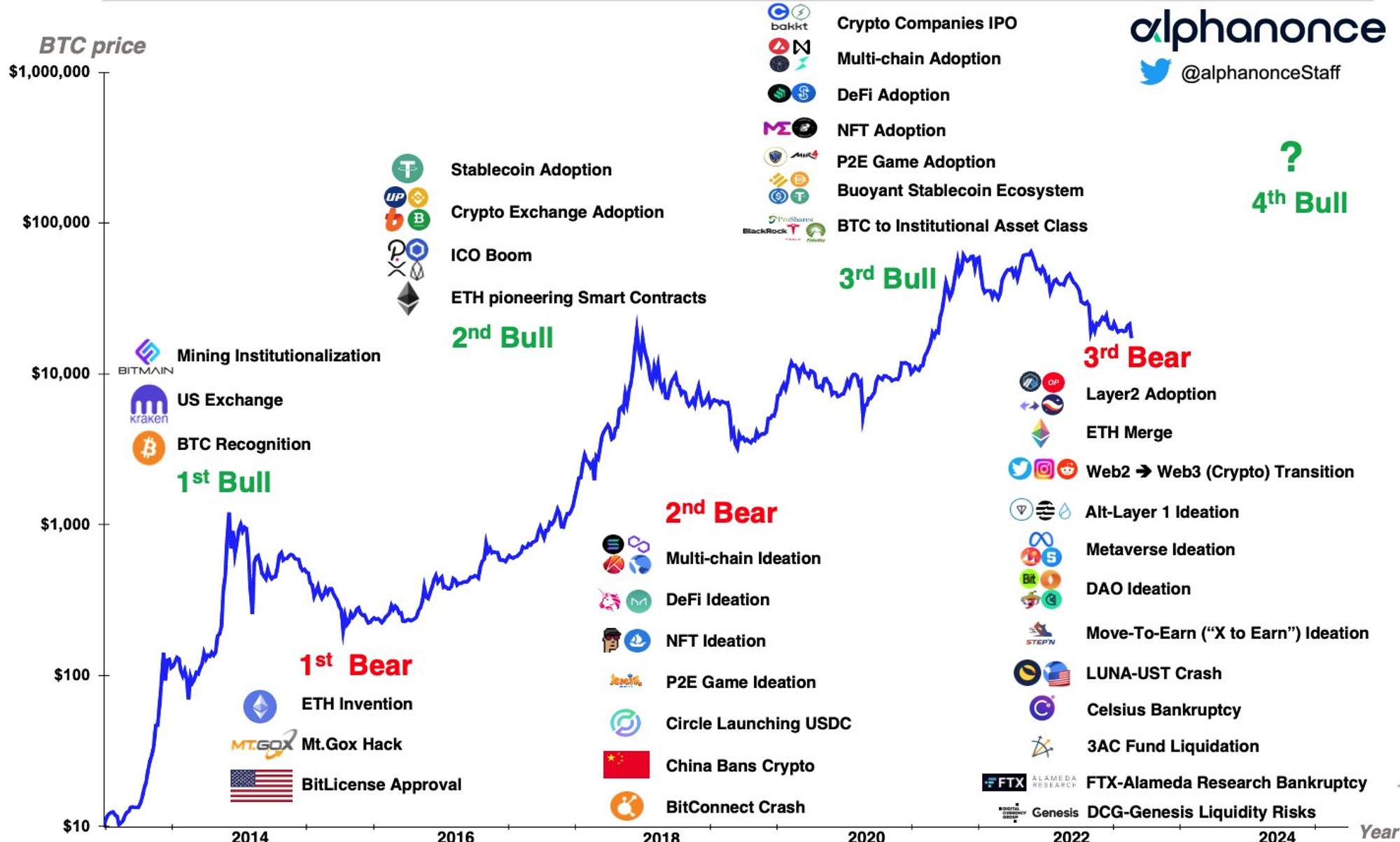
Source: X(@alphanonceStaff)
This resulted in a unique "narrative game" culture taking hold throughout the crypto industry. It's common for emerging industries to place more value on future potential than on immediate practical benefits for users. However, the crypto world stands out for how dominant this narrative-driven approach has become. Marketing strategies based on compelling stories have remained effective since the days of the ICO boom, when everyone was scrambling to publish whitepapers, until today. In the crypto space, the most influential figures have been philosophers, researchers, and thought leaders. The tendency to idolize these figures has become one of the industry's most defining characteristics.
Moreover, the narrative game proved especially effective because most participants in the crypto market were investors and traders. The success of crypto's narrative game goes beyond just effective marketing campaigns. Crypto's biggest strength lies in its permissionless nature and ownership model, allowing anyone to tokenize any idea and assign it economic value. How convincing and appealing a narrative a project could present became a key factor directly linked to its market value. As prices rose and trading volumes increased, traders tirelessly sought out the next compelling story, while projects created an endless loop to supply these desired narratives. The crypto industry sustained its growth through cycles of new narratives constantly emerging and fading away.
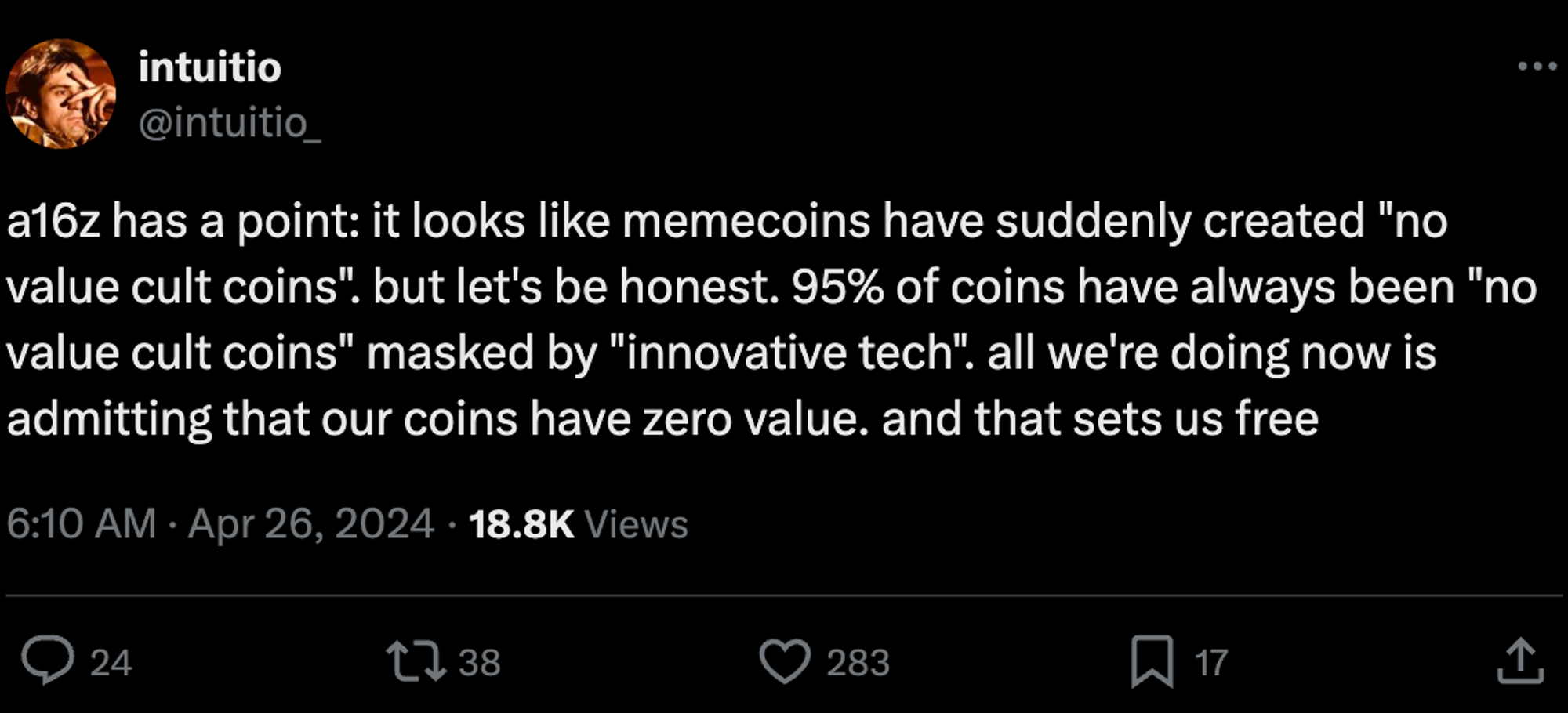
Source: X(@intuitio_)
The memecoin frenzy since early this year is exposing the true nature of crypto's narrative game. These meme coins and celebrity tokens, emerging in a favorable market environment, have stirred up significant attention and debate. The fact that these coins, which offer little real utility or vision, are gaining traction in the market is a glaring indication that the narrative game remains the dominant force driving crypto markets.
The rise of memecoins isn't just about speculation. It also reflects a critique of the elitism in crypto which pursues complexity and the market’s uneven condition between retails and VCs. As the industry matured, truly innovative narratives became scarce. Projects increasingly claimed to be revolutionary based on minor differences. This led to an oversaturation of platforms, excessive block space, and fatigue over repetitive narratives. Moreover, major projects received inflated valuations from VCs even before launch and tried to control price with limited circulating supply. The situation makes harder for many retails to participate in this narrative game.
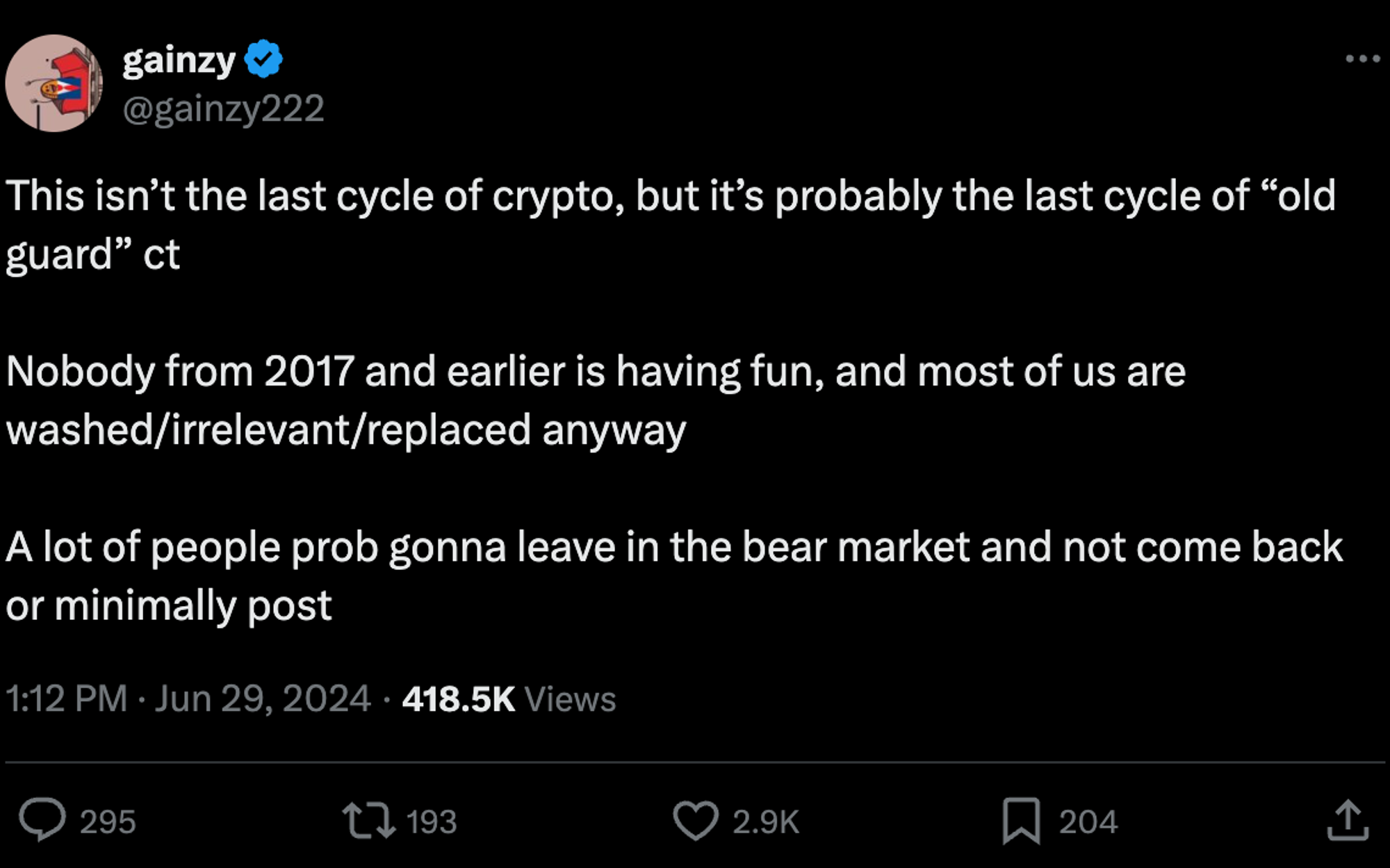
Source: X(@gainzy222)
The meaning of narratives in crypto is changing, along with how participants consume them. It's unclear how long the old playbook of creating new narratives to justify high market caps will remain effective. We can't expect new tech innovations or business models to emerge weekly forever.
Until now, the crypto market built narratives on things like technical breakthroughs and capital efficiency. However, investors and users seems to develop a meta-awareness of the narrative game itself now.
As a result, crypto's narrative game seems to be unfolding in a polarized manner. One side complains that new innovations and narratives aren't emerging in the market like they used to. The other side repeatedly gets hyped about newly appearing meme coins and influencers, only to see them burst like bubbles. We will likely witness this change becoming even more obviously in the near future.
Since its inception, the crypto’s narrative game has undoubtedly played a crucial role in building the foundation of this industry. More than just a means to defend token prices, the crypto industry needed objective and vision to justify its existence and potential, especially in the midst of fraud, speculation, and regulatory pressure. Many embraced the vision of blockchain and Web3. Their dedication to developing the crypto industry has been crucial in shaping its current form.
Moreover, despite the vision and potential of blockchain and Web3, their technical limitations were glaringly apparent. Networks with sufficient level of security and censorship resistance were too slow and expensive for everyday applications. During the DeFi and NFT summer, a single transaction on Ethereum could easily cost over $100.
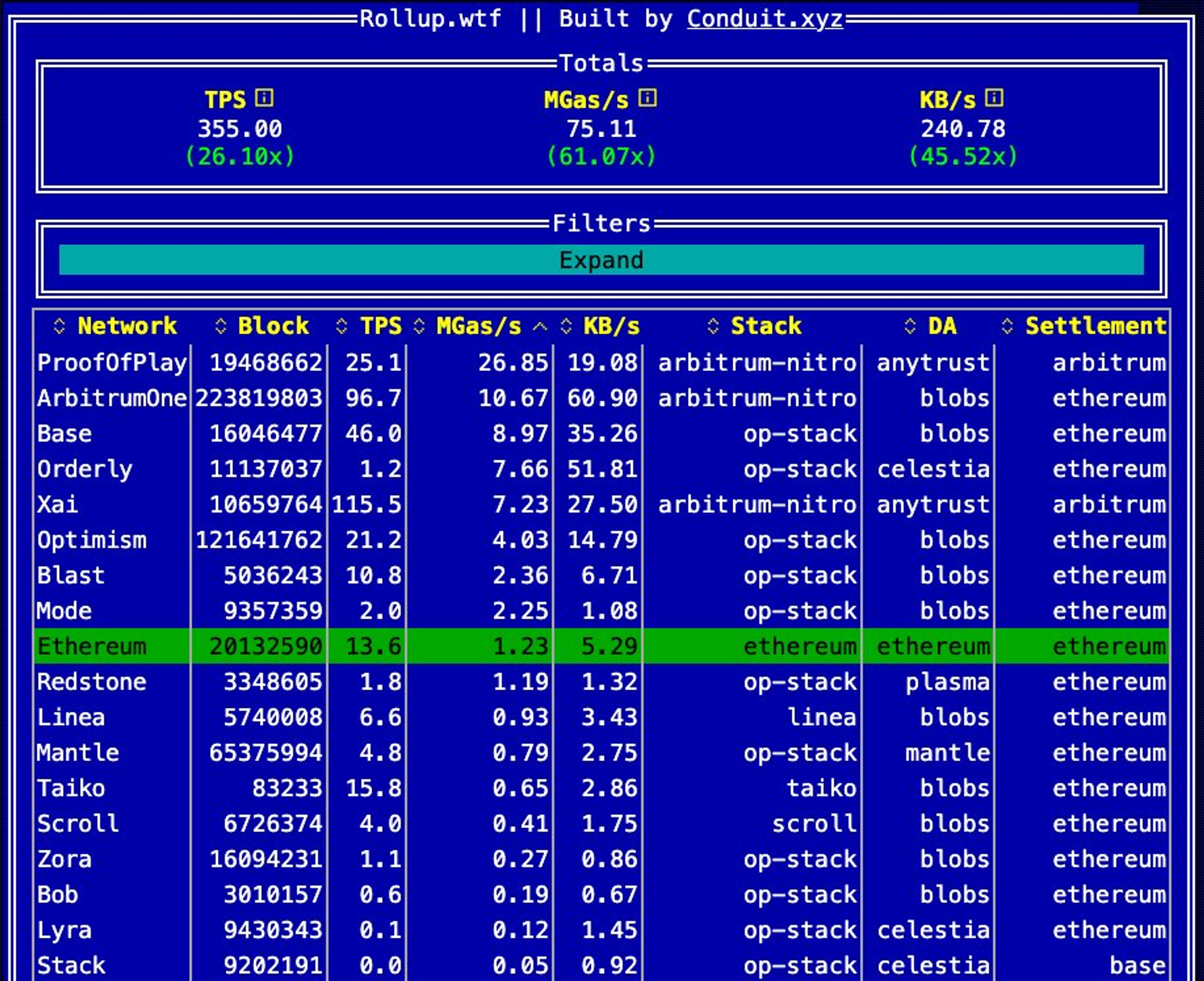
Source: Rollup.wtf
However, blockchain technology has steadily advanced through the efforts of engineers and researchers. Now, secure and scalable blockchain space can be taken for granted thanks to them. Most L2s or high-performance chains charge transaction fees under $0.01, with speeds comparable to conventional applications. Now blockchains with sufficient censorship resistance and cheap blockspace is no longer scarce, thus making it a commodity available to anyone with small amount of fee.

Source: The Myth of The Infrastructure Phase
Looking back the history, it's been 16 years since Bitcoin's emergence and 9 years since Ethereum's. During the progress, the crypto industry has gone through several cycles of infrastructure and application development, experiencing both technological advancements and downfalls caused by the greed. In its nascent stage, the industry developed relatively slowly due to lack of demand and resources required for research and development. During the DeFi and NFT summer of 2020, there was high demand for applications, but systems to support this demand were insufficient. We acutely felt the need for stable and scalable infrastructure.
The market downturn and crypto winter after 2022 paradoxically marked a period of rapid development in blockchain infrastructure. Rollups, data availability layers, and ZK technology have moved beyond the research stage to commercialization. The market is actively adopting these innovations. Integrated chains like Solana are attracting new users with their cheap and fast transactions. High-performance chains such as Sui and Monad are also generating excitement, with the promise of more applications in the foreseeable future.
Infrastructure and applications develops in a complementary manner. Neither is assumed more important or should take precedence. Applications inspire the need for infrastructure. In turn, advanced infrastructure provides the foundation for new types of applications. YouTube's birth in 2005, rather than 1995, was possible due to the widespread adoption of broadband infrastructure. This broadband adoption, in turn, was facilitated by the success of earlier dot-com businesses like Amazon and eBay.

Source: X(@Imrankhan)
There's still significant room for technical improvements in blockchain technology. We expect to see more widespread adoption of networks that offer enhanced user experience and security. However, it's undeniable that the crypto industry's narrative has been overly focused on technological improvements and ideological concepts. Now, it's time for applications in the crypto industry to inspire infrastructure development. Above all, we need applications that can generate demand for block space.
As explained earlier, the crypto industry has always had a market demand for new narratives. This tendency is even stronger in the Web3 environment, where value accumulation is concentrated at the protocol layer. As a result, the crypto industry continues to show a preference for platforms and infrastructure, almost out of inertia. The emergence of applications has been relatively delayed and the impact on users has been undervalued.
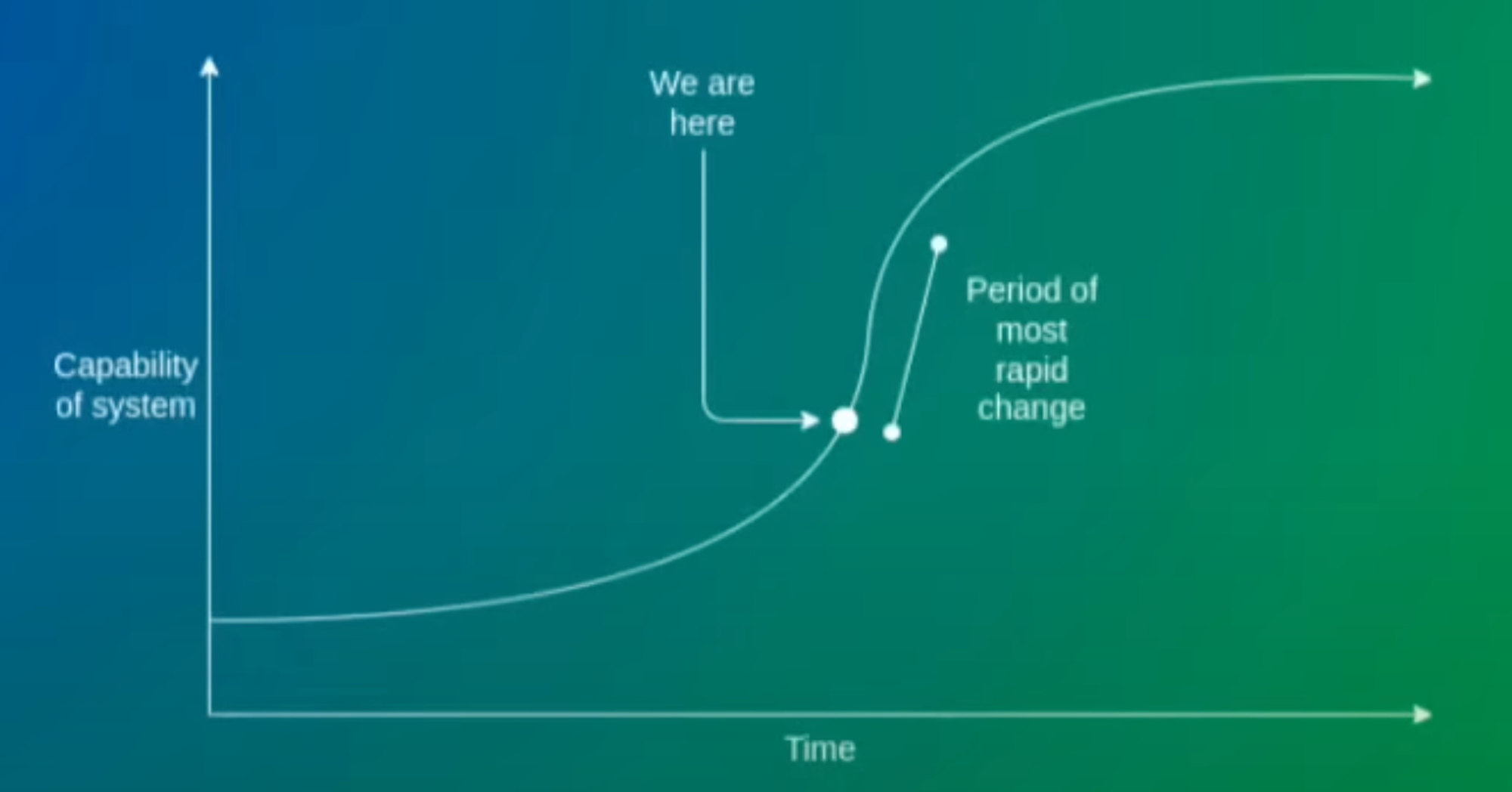
Source: Vitalik Buterin (EthCC 2022)
After the Dencun upgrade of Ethereum earlier this year, Vitalik Buterin expressed his take on the future direction of the crypto industry.
Today, I would argue that we are decidedly on the decelerating, right side of this S-curve. As of two weeks ago, the two largest changes to the Ethereum blockchain - the switch to proof of stake, and the re-architecting to blobs - are behind us. Further changes are still significant, but they are not drastic to the same extent that proof of stake and sharding are.
The first ten years of Ethereum have largely been a training stage: the goal has been to get the Ethereum L1 off the ground, and applications have largely been happening within a small cohort of enthusiasts.
What this means to developers is simple: we no longer have any excuse. Up until a couple of years ago, we were setting ourselves a low standard, building applications that were clearly not usable at scale, as long as they worked as prototypes and were reasonably decentralized. Today, we have all the tools we'll need, and indeed most of the tools we'll ever have, to build applications that are simultaneously cypherpunk and user-friendly. And so we should go out and do it.
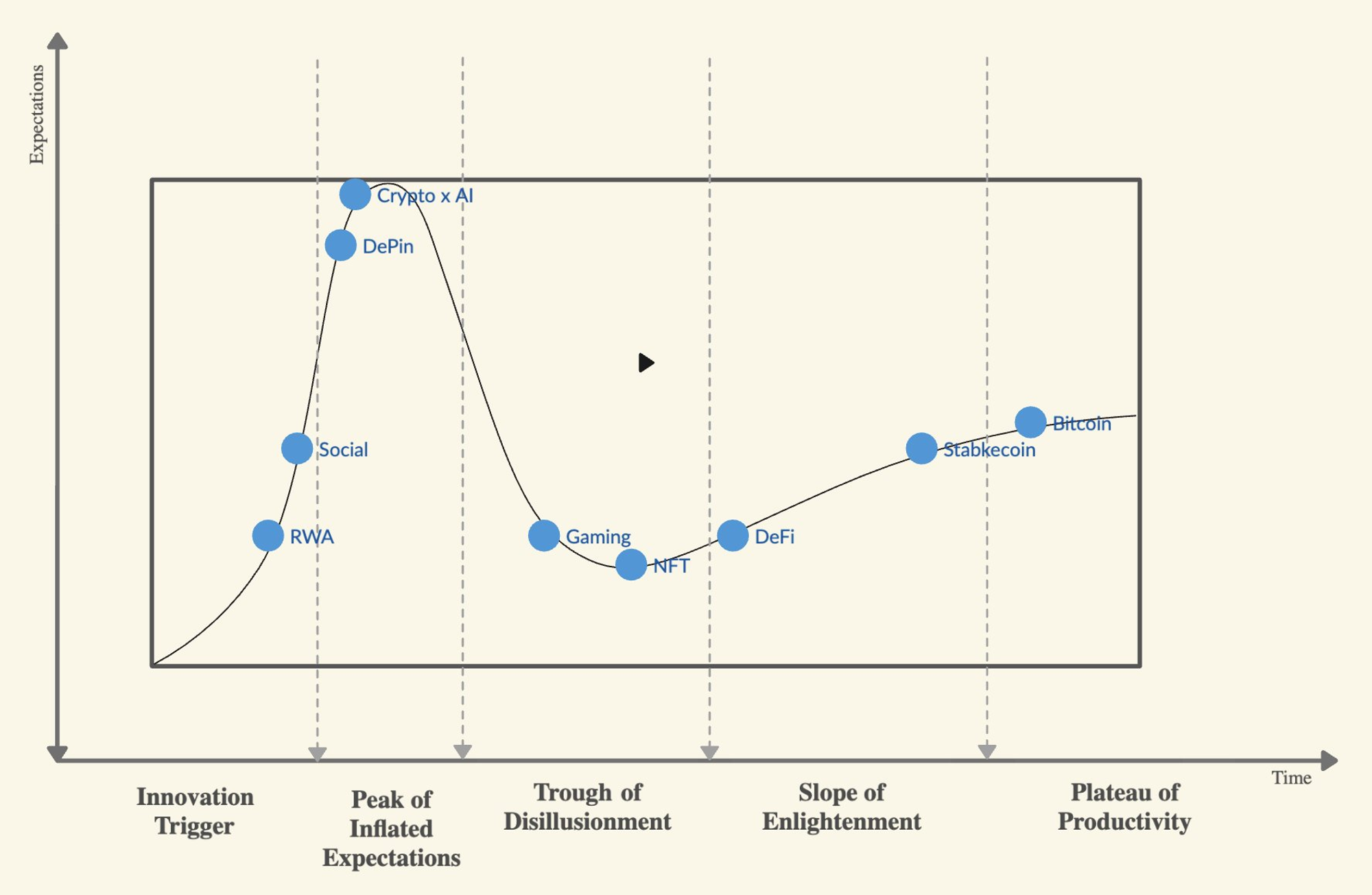
Source: X(@QwQiao)
When broken down by sector, tokens as stores of value such as Bitcoin, and stablecoin as payment methods enters a maturing stage. Stablecoin have become the onchain reserve currency and are actively being adopted in countries with unstable currencies, such as Latam or Africa. The DeFi space is also moving past the disillusionment phase, with major projects now becoming stable businesses. According to Token Terminal, MakerDAO generated $3 million in revenue in the first quarter of 2024, or about $12 million annualized. However, the token's market value is only $20 billion, resulting in a PER of about 16. This doesn't seem to be overvalued even when compared with conventional fintech companies.
On the other hand, there has been only marginal adoption in areas for the broader group of users. NFTs seem to be going through a deep and narrow disillusionment phase. After the bull run in 2021, most of NFT projects have failed to gain traction with the community, except for a few core IPs. Despite the expectation in the market, gaming has also failed to deliver meaningful results and has been disregarded by users. Other areas such as AI, DePIN, and Social have either not yet reached their peak of hype or are just in the beginning stage of innovation.

The crypto industry has already surpassed a critical threshold. With all the challenges including the Terra and Luna incident, the collapse of FTX, a harsh macro environment, and regulatory pressures, crypto has continued to develop and progress. Even under extreme assumptions, it has now become quite unreasonable to imagine a scenario where the entire industry collapses. However, it cannot be denied that the areas where blockchain is used are still largely confined to finance and trading, catering to a limited user group and lacking mainstream appeal.
The crypto industry appears to be in front of a crossroad. The crypto industry could continue as it is today, with only incremental improvements within proven areas such as tokens as a store of value or DeFi. This doesn't mean that staying in its role as a money market isn't significant. But it could be limited to a market driven by enthusiasts, much like the poker or cannabis industries. However, crypto possesses significant potential as an application layer. Ideally, leveraging this could lead to the adoption of mainstream applications and the emergence of new business models.
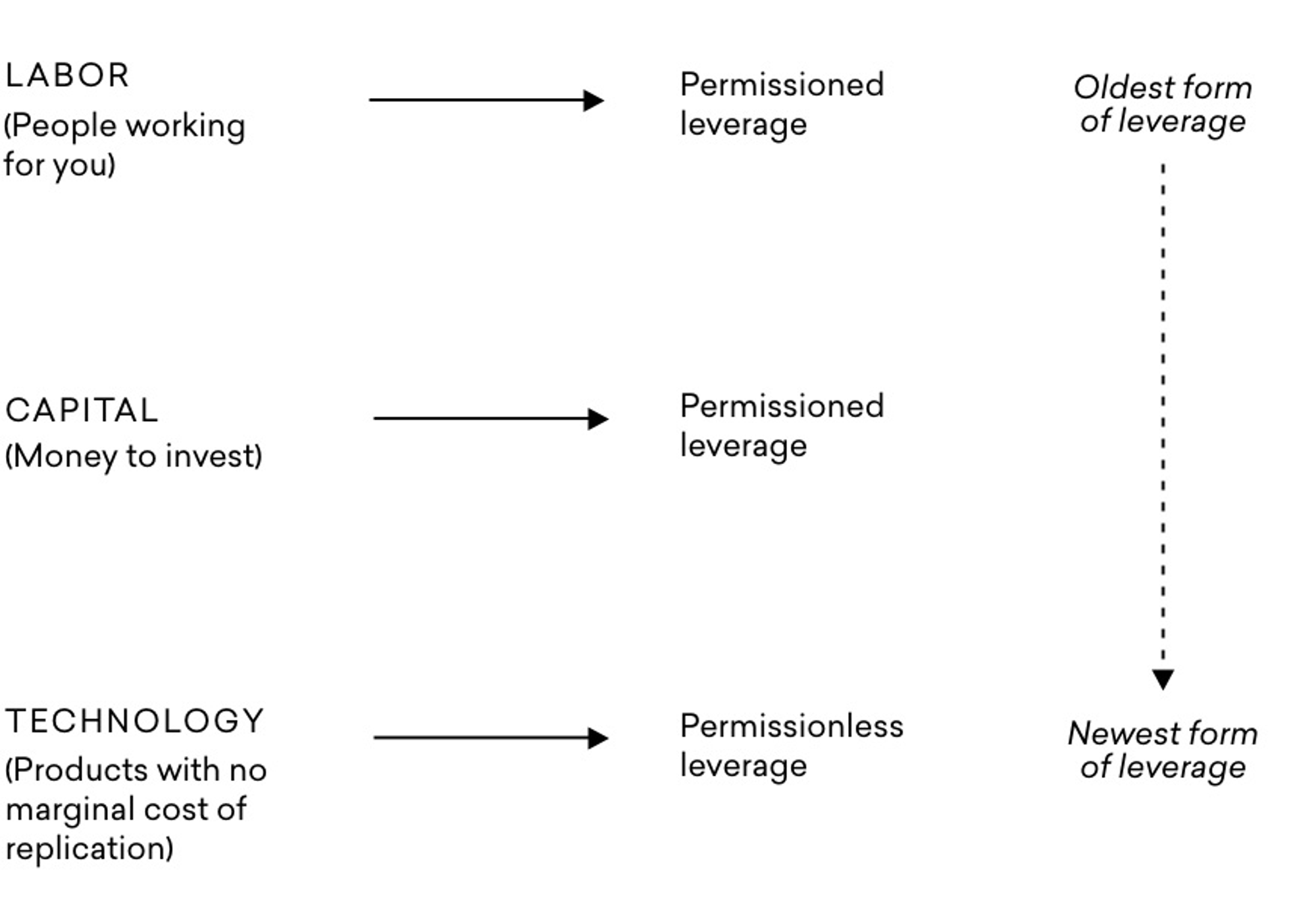
Source: Insights from 'The Almanack of Naval Ravikant'
Traditionally, leverage for individuals or businesses was limited to those with access to capital and labor. However, the proliferation of software and media has enabled even those without such resources to create leverage. Software has allowed anyone with minimal capital to develop applications and services, leading to innovations and the birth of numerous platforms and SaaS products. The widespread adoption of platforms like YouTube and Instagram has enabled individuals to expand their influence, resulting in the Cambrian explosion of influencer markets and small-scale media.
The greatest value that crypto offers is the ability to assign economic value to any idea and provide a platform to trade it. In traditional systems, forming a market required the intervention and permission of intermediaries to maintain economic value and mutual trust. However, blockchain technology offers a foundation for tokenization, allowing users to exchange economic value and form markets with others over the internet without needing to trust or obtain permission from anyone else.

The term "meme" was first introduced by Richard Dawkins in his book "The Selfish Gene" as a concept analogous to the gene, which transmits genetic information physically. In society, a meme is a unit of cultur, encompassing ideas, trends, fashions, and tastes. It later adapted to internet culture and has become widely used in its current sense. Memes, just like genes, propagate through social interactions, evolving as they are copied, modified, and reproduced.
Recently, Michael Rinko from Delphi Digital highlighted in his article "Attention is all you need" that crypto assigns economic value to people's ideas and interests, by allowing users to own their interests and earn profits from them.
On Instagram, we pay attention to brands and influencers. But the most I can do is repost and share this content with friends. The value of my attention is 100% captured by other people
But crypto is different. Crypto ~democratizes~ attention by letting us own it. If you find yourself spending a lot of time on topics you can actually own and profit from your attention. This may seem dumb and obvious, but it represents a seismic shift in the Internet’s economics.
Memecoins take the “attention is value” framework to its logical extreme. They offer the purest way to buy a token because of the future attention you think it will command.

Source: X(@jessewldn)
It is essential to recognize that memecoins themselves are not what matters here; they are ultimately just a meme, that can quickly fade from people’s attention when they become boring. However, what memecoins have demonstrated is the raw potential of tokenization, suggesting the possibility for the emergence of new types of applications. From identity, data to creator economy, the ability to assign economic value to attention has paved the way for markets and applications that have never existed before.
Especially in the first half of 2024, the crypto market saw a resurgence of activity, highlighted by the rapid growth of applications that convert people's attention into speculative demand.
Solana's pump.fun became a prime venue for launching meme coins, once reaching the top among all protocols in fee generation.
Friend.tech and Fantasy.top have integrated social trading features linked with Twitter, generating strong speculative demand and achieving $65 million in fees and over $36 million in trading volumes, respectively.
DEGEN, a Scenecoin based on Farcaster, attracted significant number of users and activities with innovative airdrops and community incentives, thus contributing to the success of the Farcaster ecosystem.
Polymarket saw significant growth in activities and volume alongside the US presidential elections, recording $100 million in transactions in June alone
TON blockchain's Hamster Kombat achieved a user base of 100 million, leveraging its simple feature and seamless integration with Telegram.
Although the list is not exhaustive, the release and experimentation of both large and small applications are continued. Even though the industry has been around for over 10 years, development of applications leveraging the unique characteristics of crypto have only just begun. The range of unique user experiences that on-chain applications can offer is still undefined. These initiatives should be valued more for providing meaningful experimental results on how crypto applications can meet user needs and achieve market fit. Further experiments are anticipated in crypto's social, gaming, NFT, and prediction markets, which have yet to be sufficiently explored.
Blockchain is a backend technology. Except app-specific chains, most networks provide a general execution environment and database for applications to operate on. In principle, most of the applications we use daily could run on blockchain. Just as software no longer uses its capability to run on mobile or use the cloud as a marketing keyword, crypto should not be a word that describes the functionality of an application. Eventually, the terms 'blockchain' or 'crypto' will not be used to describe applications, and users should be able to use applications without being aware of the underlying chain or wallet.
When someone wants to launch a product or service, no one asks why it’s being released online. It is much cheaper and faster to deploy, and except for special cases, customers enjoy greater convenience and accessibility compared to offline. Similarly, it is anticipated that, eventually, operating applications onchain will be seen as just as natural. As the permissionless market, connected application ecosystem, and use of wallets become commonplace, we will no longer question why applications need to be on the blockchain
However, in the currently limited status of onchain environment, such assumptions are nothing more than a hope. The onchain development environment is still challenging, and users are not only unfamiliar with using wallets but also tend to avoid them. Except a small group of enthusiasts, most applications and users need strong motivation to use onchain applications. It won’t be just about improving by 10% or 20%; there is a need to leverage user experiences and features that are only possible in an onchain environment.
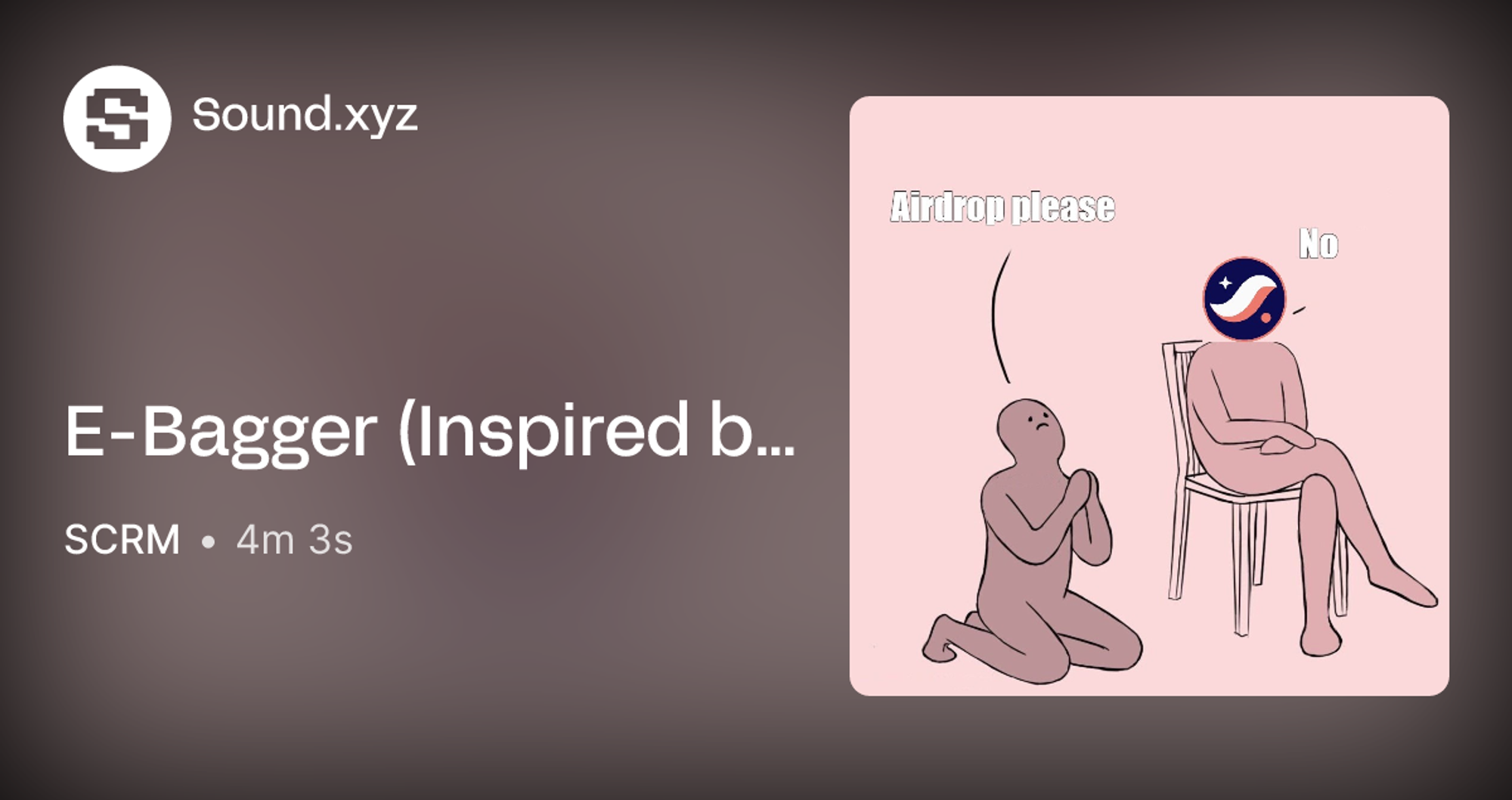
Source: Sound.xyz
Most users in the crypto are airdrop farmers and traders who have joined primarily to satisfy speculative demand. However, those who pursue the ideals and vision of crypto see such speculation as contrary to the intrinsic purposes of crypto and try to distance themselves from these practices. Yet, the role of these 'degens' in the crypto industry needs to be reassessed. It is no exaggeration to say that the crypto industry was built on the capital injected through speculation. The fact that most onchain transaction volume is based on speculative demand, arbitrage, or MEV profits should not be overlooked. Infrastructure without users has no value, and it's undeniable that degens form a significant pillar sustaining the crypto industry.
During the 2021 NFT summer, many companies and brands flirted with entering the crypto industry, and participants in the crypto space were thrilled by this news. However, it was not Disney but Pudgy Penguins that ultimately succeeded. Crypto has already reached a level where it can sustain its growth autonomously. Achieving mainstream adoption seems more likely through successful products within the crypto industry expanding outward, rather than external entities entering the crypto space. Ultimately, degens are the early adopters and essential user group for all onchain applications, and meeting their demands should be the first step in validating market fit.

Source: eToro
The preference for speculation is not confined to crypto but is a social phenomenon. Deepening economic inequality and the shortening attention spans influenced by social media have driven people's risk tolerance for investment assets to higher levels. While the average stock holding period in the United States was five years in the 1970s, it dropped to ten months by 2020.
It is unfair to simply criticize Gen Zs for their high-risk preferences as being careless or gambling-prone characters. In most major countries today, it has become harder for the younger generation to live better than their parents generation. With the clear understanding that labor income cannot surpass capital income, many adopt the stance that they have nothing to lose. They are already short on chips, and without aggressive betting, it is becoming increasingly difficult to survive at the table
While the current state of affairs is undoubtedly dystopian, the high volatility of crypto tokens is seen by many as a moonshot opportunity to reverse their fortunes. Speculative assets with high accessibility, like memecoins, have proven to be a primary means of drawing new users into crypto. Fueled by the memecoin frenzy on Solana, the Phantom Wallet achieved third place in the utility app rankings on the US App Store and recorded 7 million monthly users. Users attracted by speculative demand unconsciously learn about digital ownership, wallets, and markets as they use applications, joining the culture and potentially converting to organic traffic.
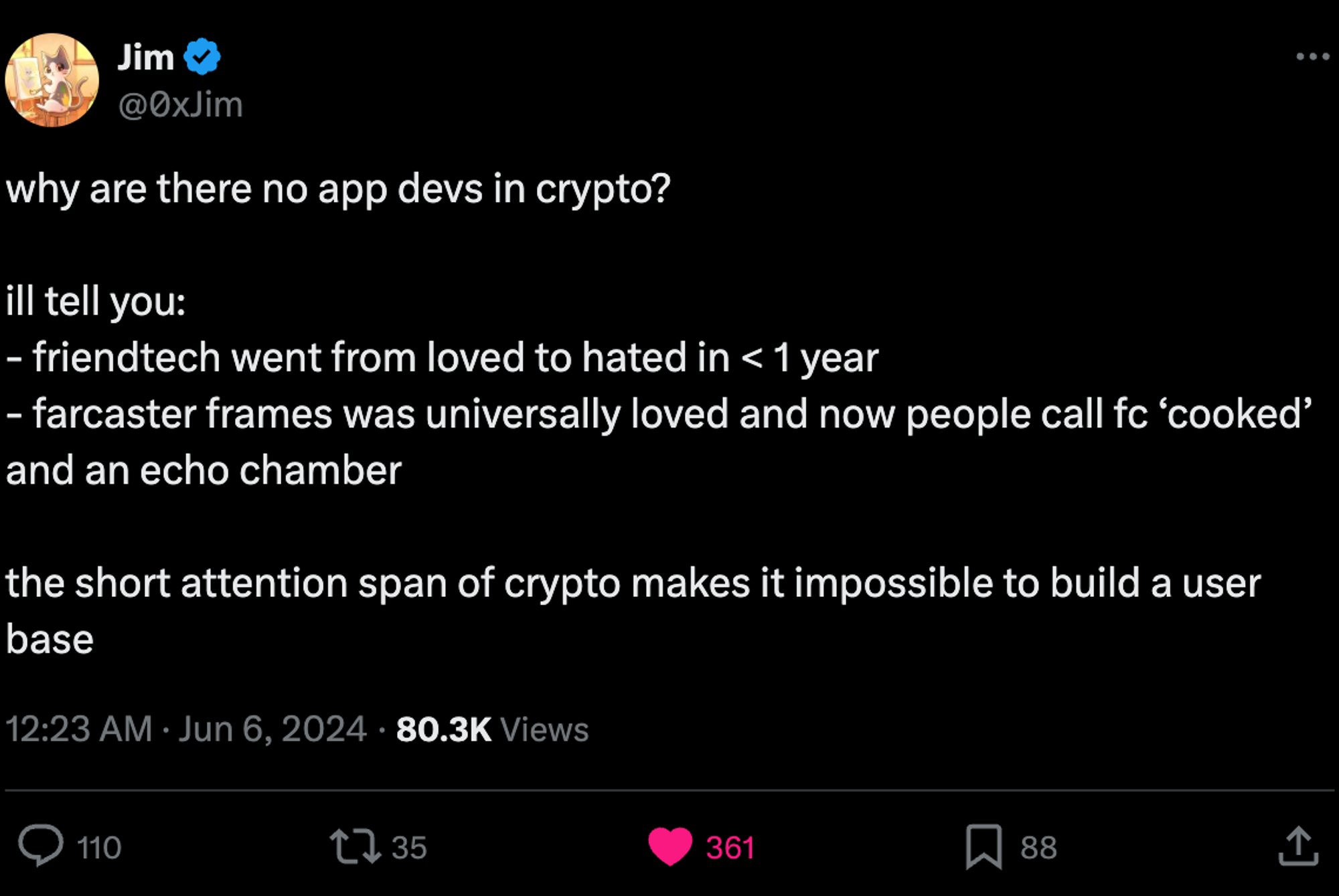
Source: X(@0xJim)
Although most onchain applications manage to attract significant attention in a short period by leveraging unique user experiences and speculative demand, they often have short lifespans due to their rough features and extremely speculative nature. However, it is an oversimplification to conclude that on-chain applications cannot achieve retention structurally.
The reasons for the short lifecycle of onchain applications include: 1) the majority of the user group consists of degens and traders who have very low loyalty for the product, 2) very little time and resources are allocated to product development compared to infrastructure development, and 3) most products excessively focus on short-term speculation rather than long-term utility.
Lastly, I want to assert that I would not contribute to this industry if speculation is the only use case for crypto. However, for crypto to achieve the vision of Web3 and make general applications like gaming and social platforms accessible, we need to consider not only the destination but also a feasible path to get there. Given the current industry and social circumstance, speculative demand seems to be the most powerful tool that crypto can leverage.
However, in the long term, it is essential to convert users attracted by speculative demand into the core value of the service, thereby building meaningful funnels and fostering interactions beyond speculation. Additionally, there needs to develop a framework for token issuance and distribution that can withstand short-term volatility in price and demand. Ultimately, the products should provide sufficient value and a social graph that can exceed speculative interest eventually.
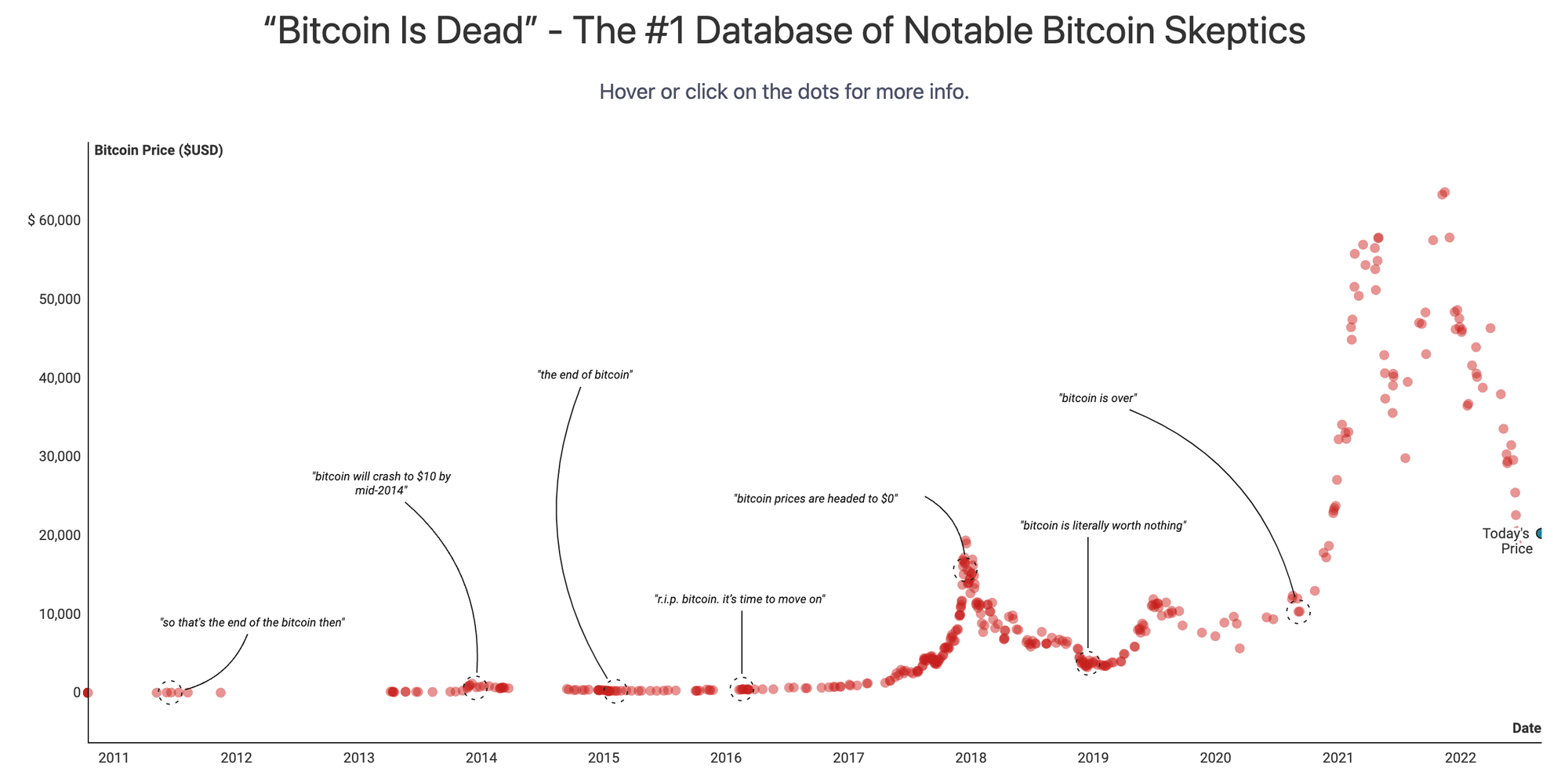
Source: “Bitcoin Is Dead”
People's sentiment fluctuates even more dramatically than the price of tokens. When prices drop, everyone proclaims the end of the market. Since its inception, Bitcoin has been declared dead every single year. I believe that the crypto industry has already grown to a level where it can function and grow without intervention of outside. However, the next 2-3 years will be crucial in determining whether the crypto industry can achieve the vision of Web3 and become mainstream. If significant PMF cannot be validated in this cycle, there will be nothing to make further excuses.

It has been 10 years since Ethereum, the first general purpose blockchain, was launched. Despite extensive research and development, and industry-wide ups and downs over the years, it has only recently matured into a technology that actual users can reliably utilize. While token prices and the narrative game have driven the crypto industry so far, it is now time to focus on the products and impact on actual users more than ever.
Dive into 'Narratives' that will be important in the next year